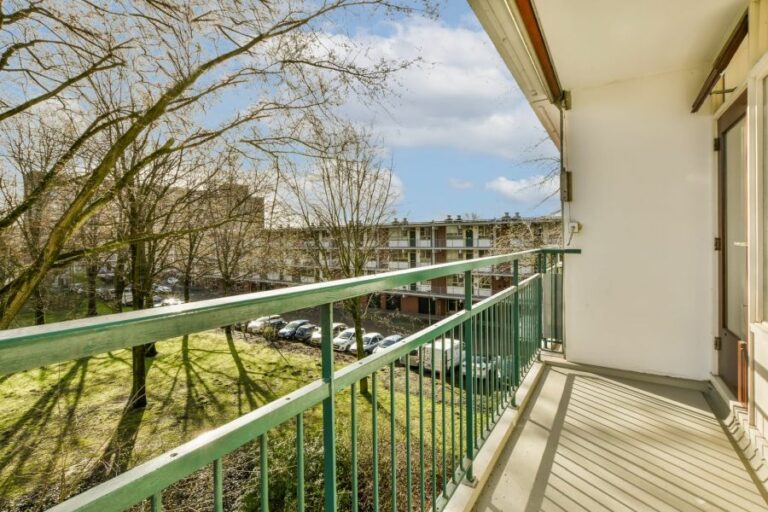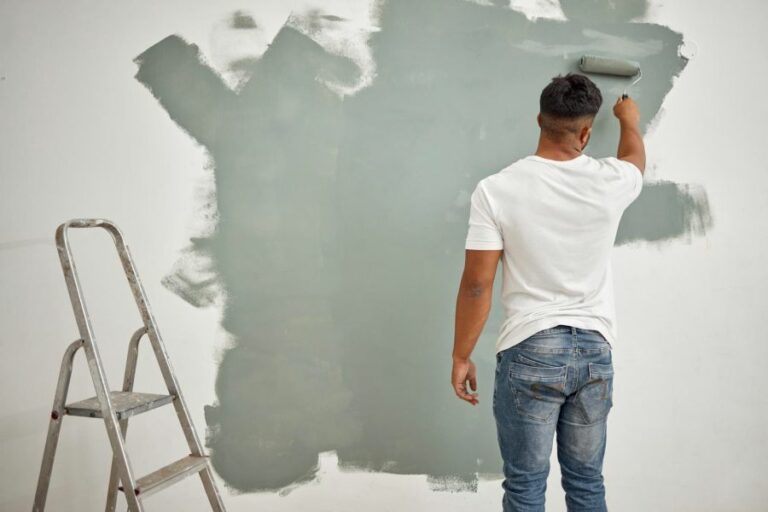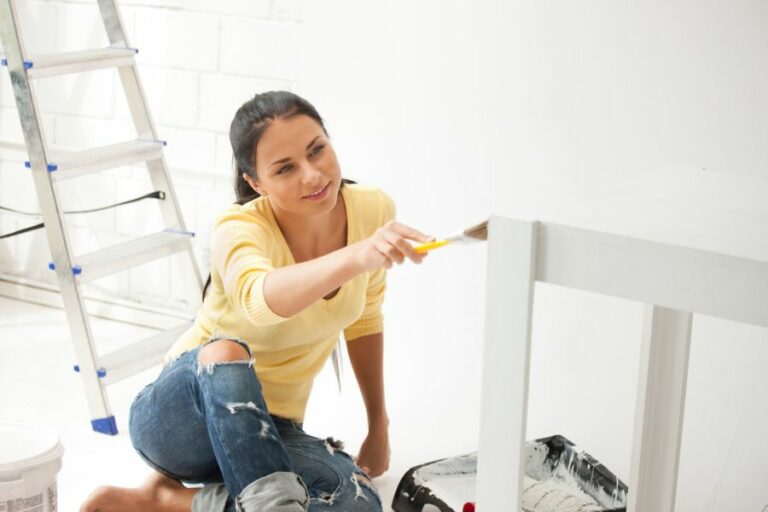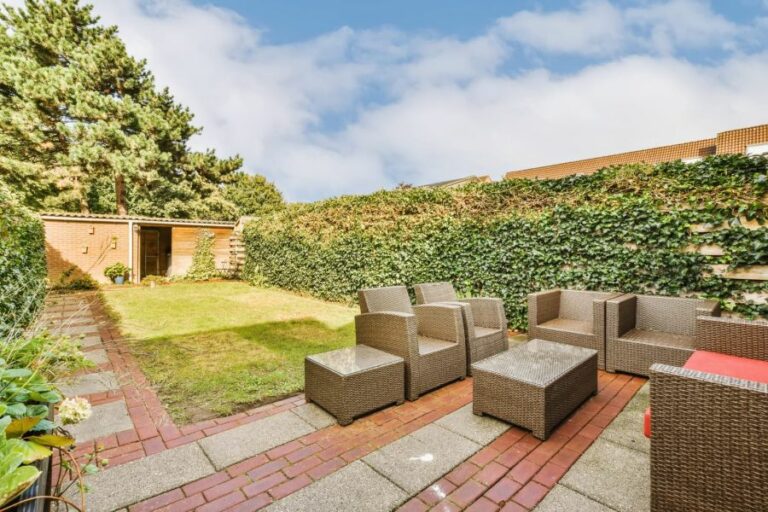Outdoor House Paint Colors, 25 Things You Should Know
Are you looking to amp up your home’s curb appeal and spark envy among your neighbors? Selecting the perfect outdoor house paint color can make all the difference. I’ll guide you through the process of picking colors that not only suit your taste but also harmonize with your surroundings. From trending shades to timeless classics, I’ll reveal the top outdoor paint colors that breathe new life into your home’s facade.
Outdoor house paint colors:
decidingSelecting the perfect outdoor house paint color is crucial for boosting curb appeal and protecting your home’s exterior. Consider factors like architectural style, regional preferences, color combinations, surrounding environment, and resale value when making a decision. Choose timeless, high-quality, fade-resistant paint and coordinate with roof and accent colors for a well-balanced appearance. Consult a professional and use visualization tools to choose the ideal color.

Find the perfect outdoor house paint colors to enhance curb appeal and elevate your home’s exterior. Discover expert-approved palettes, trending shades, and tips for choosing the right color to complement your home’s style and surroundings. Add a touch of personality while boosting its value!
Contents
- 1 Exterior Home Paint Color Options
- 2 What are the Most Appealing Exterior Paint Colors for a Home?
- 3 What is the Most Widely Preferred Color for a House’s Exterior?
- 4 What are the most optimal exterior house paint colors for hot weather conditions?
- 5 What is the Most Enduring and Timeless Exterior House Color?
Exterior Home Paint Color Options
• Introduction
Selecting the perfect outdoor house paint color is crucial not only to boost your home’s curb appeal but also to protect its exterior from the ravages of nature. With countless shades and tones available in the market, making a decision can be quite daunting.
• The Impact of Architectural Style and Region
– Architectural Style
It’s essential to consider the architectural style of your home before selecting a paint color. Certain colors complement specific design styles and can enhance the overall appeal of your house.
For instance:
- Traditional styles: Classical homes, such as Victorian or Colonial, tend to look best in neutral colors. Time-honored shades like white, beige, or cream help to maintain their vintage charm.
- Contemporary styles: Modern homes offer more room for experimentation. Bold colors like blacks, grays, and whites can create sharp contrasts, while vibrant colors like blues and greens can lend an urban and stylish look.
– Regional Influence
The region you live in can also influence the choice of paint color. Some geographical areas are more suited to specific colors due to the prevailing weather conditions or local cultural preferences.
For example:
- Coastal regions: Cool colors like blues, greens, and light grays evoke a relaxed, seaside vibe and often blend seamlessly with the surrounding natural landscapes.
- Desert regions: Earth tones like tans, browns, and terracottas evoke a warm and cozy atmosphere and harmonize well with the arid surroundings.
• The Role of Color Combinations
– Coordination with Roof Color
One of the often-overlooked aspects when choosing a house paint color is coordination with the roof color. A well-matched roof and paint color can dramatically enhance the visual appeal of your home. For instance, if your roof is dark, a lighter color on the exterior walls can create a pleasant contrast.
Conversely, opting for a darker paint color can provide an elegant and harmonious look if you have a lighter-colored roof.
– Accent Colors
In addition to the primary paint color, accent colors play a crucial role in creating an attractive and balanced appearance. Accent colors can be used on doors, window frames, shutters, and architectural details. Choosing an accent color that stands out but doesn’t clash with the primary color is essential.
For instance, a bold red or blue door can make a dramatic statement against a neutral-colored exterior.
• Taking the Surroundings into Account
– Foliage and Landscaping
The surrounding foliage and landscaping can influence your choice of house paint color. If your house is surrounded by lots of tree cover or lush greenery, consider choosing a color that blends well with the natural environment. This can create a calming, cohesive effect that imparts a sense of tranquility.
Conversely, you can opt for a contrasting color to make your house stand out amidst the green backdrop.
– Neighboring Homes
Another factor to consider is the colors of surrounding homes. While it’s essential to maintain your home’s individuality, choosing a color that complements neighboring houses can create a harmonious and pleasing streetscape.
On the other hand, selecting a color that clashes with neighboring homes can be visually jarring and impact the overall curb appeal of the neighborhood.
• Considering Resale Value and Longevity
– Timeless Appeal
Selecting colors with timeless appeal is vital, especially if you plan to sell your house in the future. Neutral colors, like whites, grays, and beiges, have a broad appeal and are less likely to appear dated over time.
Furthermore, choosing high-quality paint is essential to ensure your home’s exterior remains attractive and well-protected for an extended period.
– Long-lasting Performance
Opting for fade-resistant and durable paint is crucial to maintain the exterior’s stunning appearance. While investing in premium-quality paint may seem expensive upfront, its longevity and protection can save you money in the long run.
Additionally, it’s crucial to undertake regular maintenance and touch-ups to ensure your house retains its freshly-painted look.
• Final Thoughts
In conclusion, selecting the perfect outdoor house paint color is crucial and requires a well-thought-out approach.
By considering factors like architectural style, regional preferences, color combinations, surrounding environment, and resale value, you can create a stunning and lasting impression while also protecting your home’s exterior from the elements.
Don’t hesitate to consult a professional painter or designer for guidance, and experiment with color swatches and digital visualization tools to arrive at the ideal color choice.
What are the Most Appealing Exterior Paint Colors for a Home?
Choosing the right outdoor paint color for your house can be daunting. With so many options available, it’s essential to pick a color that enhances the beauty of your home, complements the surroundings, and holds up well to weather exposure.
• Classic Whites
White is a timeless and versatile choice for outdoor paint. It works well with traditional, modern, and even minimalist architectural styles. A few popular white paint colors include:
- Simply White (Benjamin Moore): A soft, warm white that is crisp enough to appear clean and fresh without becoming overly stark or sterile.
- Swiss Coffee (Dunn-Edwards): This gentle off-white hue has subtle beige undertones that give it a little warmth and depth.
White creates a clean and elegant look, and you can accentuate this color scheme with contrasting trim, shutters, or doors in darker hues for added visual interest.
• Neutral Grays
Gray is a great neutral option, providing a polished and sophisticated appearance while remaining subtle and fitting seamlessly with the environment. Here are some top gray paint options:
- Repose Gray (Sherwin-Williams): This popular warm gray shade has a balanced mix of warm and cool undertones, making it work well with various accents and architectural features.
- Kendall Charcoal (Benjamin Moore): A deep and rich gray, ideal for creating a striking and dramatic exterior appearance that commands attention.
Gray outdoor paint colors can be well-suited to contemporary and traditional homes alike, providing a versatile backdrop for various trim and accent colors.
• Earth Tones
Earth-tone colors blend naturally with the landscape and surroundings, making them ideal for rural or wooded settings or homes with exposed natural materials such as stone or timber. Consider these earth-toned hues:
- Manchester Tan (Benjamin Moore): A warm, versatile beige with subtle green undertones, perfect for creating a cozy, inviting atmosphere for your home’s exterior.
- Sage (SICO): A muted, earthy green that provides a sophisticated and tranquil touch to your home’s appearance.
Earth-toned paint shades often work well on homes with a rustic or farmhouse-inspired design, creating a harmonious connection with the environment.
• Coastal Blues
If your home is near the water or you want to bring a touch of the beach to your exterior, blue paint colors can create a calm, refreshing, and coastal-inspired atmosphere. Popular blue shades include:
- Hale Navy (Benjamin Moore): A rich, deep navy that evokes a sense of maritime sophistication and anchors your home with a stately presence.
- Rainstorm (Valspar): This slightly more vibrant shade of blue encourages a sense of coastal serenity while maintaining a contemporary edge.
Blue outdoor paint colors are versatile, working on various home styles, including beach cottages, coastal homes, and even more traditional properties looking to make a statement with color.
• Bold and Vibrant Choices
If you crave a unique and eye-catching exterior, don’t shy away from bold, vibrant paint colors that showcase your personality and style. Here are some standout shades to consider:
- Spicy Hue (BEHR): This warm, bold orange will make a striking statement and command attention, perfect for those looking to break away from conventional choices.
- Rhapsody (Sherwin-Williams): A rich and saturated purple hue that brings a touch of royalty and sophistication to your home’s exterior.
Bold colors may not suit everyone’s taste, but when applied thoughtfully, they can create a stunning impact and memorable curb appeal.
• Picking the Right Color for Your Home
When choosing the best outdoor paint color for your home, think about the following factors:
- Consistency with the neighborhood: While expressing your style is great, consider how your color choices will fit within the neighborhood’s overall aesthetic.
- Architectural features: Ensure the paint color you pick complements and highlights your home’s unique architectural features rather than competing with them.
- Sunlight and exposure: Outdoor paint colors may appear different based on sunlight exposure, so test out a few shades on your home’s exterior to see how they look under various conditions.
In conclusion, numerous outdoor paint colors suit your house’s style, location, and personal preferences. Whether you prefer classic whites, sophisticated grays, earthy tones, coastal blues, or bold statement colors, there’s a perfect shade out there for you.
Take the time to explore different paint options and consider how they will work with your home’s unique features and surroundings to create a visually stunning and long-lasting exterior.
Color Name | Color Family |
|---|---|
Naval Blue | Blue |
Repose Gray | Gray |
Sage Green | Green |
Classic White | White |
Earthy Beige | Beige |
Buttercream Yellow | Yellow |
Soft Coral | Orange |
Light Taupe | Brown |
Lavender Gray | Purple |
Rose Pink | Pink |
What is the Most Widely Preferred Color for a House’s Exterior?
• Identifying Popular Color Trends
As a seasoned professional in the housing and design industry, I can undoubtedly say that the most popular colors for exterior house paint change over time due to varying factors, such as cultural shifts, architectural trends, and homeowners’ preferences.
However, specific colors consistently remain popular for those looking to give their home a fresh coat of paint.
• Top Exterior Color Choices
Here are the most popular colors for exterior house paint, based on my experience and industry trends:
1. Neutral Colors
Neutral colors, which include shades of white, cream, beige, and grey, are a classic and timeless choice for homes of all styles. They evoke feelings of simplicity, cleanliness, and sophistication, making them a top pick for homeowners and designers alike.
– Whites and Creams
White and cream are popular exterior paint colors for traditional homes, such as Colonial, Georgian, and Federal styles. They are also becoming increasingly popular among contemporary and minimalist designs due to their clean and crisp appearance.
– Beiges and Greys
Beige and grey are versatile colors that suit most architectural styles, as they easily complement various materials, like brick or stone. These shades also provide a neutral backdrop for colorful landscaping or accent features like doors and shutters.
2. Earth Tones
Earth tones, such as browns, greens, and taupes, are another popular choice for homeowners looking to create a warm and inviting atmosphere. These colors blend well with natural surroundings and can highlight the beauty of a home’s architecture.
– Greens
Various shades of green, including sage, olive, and moss, are well-suited for houses surrounded by lush foliage or set against wooded backdrops. Green hues can also enhance the appearance of homes made from natural materials, like wood or stone.
– Browns
Brown tones, ranging from light tans to deep chocolates, are excellent for adding warmth and a sense of stability to a home. These shades are particularly popular for rustic or Craftsman-style residences.
3. Blues
Blue exteriors are gaining popularity in recent years as they evoke a sense of calm, relaxation, and even elegance for some. Light blues, navy blues, and even teal tones can all work well as exterior paint colors, depending on the style and surrounding environment of the home.
– Lighter Blues
Lighter shades of blue, such as sky blue or powder blue, convey a soft and peaceful feeling. These colors often work well with beach-inspired architecture, like Cape Cod or coastal homes.
– Darker Blues
Darker navy or indigo shades create a striking and bold appearance. These colors can add a touch of luxury or sophistication to modern, contemporary, or even traditional homes with elegant details.
• Factors to Consider When Choosing an Exterior Color
While the aforementioned colors are indeed popular choices, it is essential to consider several factors when deciding on the best exterior paint color for a specific home. Here are my recommendations based on years of experience:
- Architectural Style: Each architectural style has associated colors that work well to enhance its unique features. It is crucial to research and consider paint colors that align with the particular style of the home.
- Surrounding Environment: The home’s environment, such as the neighborhood, landscaping, and regional setting, should also factor into the color choice. Choosing a shade that complements the natural environment can significantly boost the overall aesthetic appeal.
- Neighboring Homes: Take note of the exterior colors of neighboring properties. While it is essential to let your home stand out, it is also essential not to clash with the surrounding homes to maintain harmony in the neighborhood.
- Sunlight: Depending on the region, the amount and direction of sunlight a home receives can alter the appearance of certain colors, such as from cooler to warmer shades or vice versa. Understanding how sunlight will affect the chosen paint color throughout the day is crucial.
Overall, the most popular color for the exterior of a house is undoubtedly subjective, as it depends on various factors, including architectural style, personal preferences, and the surrounding environment.
However, neutral colors, earth tones, and blues are consistent favorites among homeowners and designers.
Identifying the color that works best for your home may take some research and consideration, but the end result will be a visually appealing and charming exterior that suits your individual taste and the property’s unique characteristics.
What are the most optimal exterior house paint colors for hot weather conditions?
Hot weather and strong sunlight can take a toll on your house’s exterior paint. Choosing the right color for your home plays a key role in its durability, energy efficiency, and overall aesthetic appeal.
• Light and Reflective Colors
In hot weather, lighter shades are the most suitable choice as they can reflect more sunlight and heat, keeping your home cooler. Dark colors tend to absorb heat, which can make your home feel warmer and also increase energy costs.
– White
White is the quintessential reflective color and is often considered the best option for hot climates. A classic choice for many homes, white helps create a clean, modern look while providing maximum heat reflection.
– Light Neutral Colors
Colors like beige, light gray, and soft pastels are considered neutral shades. They have a calming effect, are easy to coordinate with other colors for your home’s exterior, and also provide good heat reflection.
– Pastel Colors
Pastels such as light blue, green, and pink are great options for adding some character and charm to your home. Besides being visually appealing, they are also known for their heat-reflecting abilities.
• Colors with Natural Heat Resistance
Certain color pigments inherently possess heat resistance properties. These colors are beneficial for improving the longevity of your exterior paint and can maintain cooler temperatures within your home.
– Terra Cotta
The earthy reddish-brown shade of terra cotta is attractive and has natural heat resistance properties. Its warm hue has become a popular choice for homes in hot and arid climates.
– Light Yellow
Light yellow is another color with inherent heat resistance due to the yellow pigment’s ability to shield against ultraviolet (UV) radiation. This makes it a practical choice for houses in regions with harsh sunlight and high temperatures.
• Colors to Avoid in Hot Weather
As mentioned earlier, dark colors have a tendency to absorb heat and make your home warmer. Here are a few colors best avoided in hot climates:
– Dark Blue and Purple
Dark shades of blue and purple can absorb more heat than lighter shades. While they may appear elegant, they may not be ideal for regions with hot weather.
– Dark Brown and Gray
Dark shades of brown and gray can also absorb and retain heat, making them unfavorable choices in hot climates. Opt for lighter, cooler neutrals instead.
• Additional Tips for Choosing Exterior Paint Colors in Hot Weather
Here are some handy tips to keep in mind when selecting exterior paint colors:
- High-Quality Paints: Invest in high-quality paints that contain heat-reflective technology. These paints can help reduce surface temperatures and prolong the life of your exterior paint job.
- Color Testing: Paint a small area of your home with your chosen color, allowing you to see how the color looks under different lighting conditions.
- Complementary Colors: As much as the main exterior color is important, do not forget to choose complementary colors for the trim, accents, and architectural details.
• Conclusion
When it comes to selecting exterior paint colors for hot weather, it’s essential to strike a balance between aesthetic appeal and practical considerations.
Lighter shades, natural heat-resistant colors, and high-quality paints are your best bets when trying to keep your home cool and protected from the harsh effects of hot weather.
With these tips in mind, you’re sure to find the perfect color to make your home stand out while keeping it comfortable and energy-efficient.
Color | Description | Benefits |
|---|---|---|
White | A classic, crisp color that offers a clean and minimalist look. | Reflects sunlight, keeping the house cooler and saving energy. |
Light Gray | A neutral, contemporary color that pairs well with various architectural styles. | Reflects sunlight and heat, and hides dirt and imperfections well. |
Beige | A warm and inviting neutral color that complements natural surroundings. | Helps to reflect sunlight and heat while maintaining a timeless aesthetic. |
Pale Blue | A soft, calming color that evokes the sky and water. | It reflects sunlight and heat, adding a sense of coolness and tranquility to the home exterior. |
Light Sage | A subtle, muted green that blends well with natural landscapes. | Helps to reflect sunlight and heat while providing a connection to nature. |
What is the Most Enduring and Timeless Exterior House Color?
In the world of design, trends come and go. However, when it comes to choosing an exterior house color, you want to make sure you opt for a timeless option that will look good for years to come.
A few factors contribute to a color’s timelessness, including its ability to complement the environment, improve the home’s curb appeal, and adapt to changing trends.
• Understanding The Importance Of Timeless Colors
Before we delve into the most timeless color, let’s explore why making a timeless choice for your home’s exterior is essential. The exterior color of your house has a significant impact on many aspects such as:
- Curb appeal: A timeless color will add to your home’s attractiveness and make it stand out in the neighborhood.
- Home value: A well-chosen exterior color can improve your home’s resale value, as potential buyers will find it appealing.
- Longevity: Timeless colors tend to age well and don’t require frequent updates, saving you time and money in the long run.
All of these factors make choosing a timeless exterior house color an essential task that should be carefully considered.
• The Most Timeless Exterior House Color: White
White has long been considered the most timeless exterior house color due to its versatility and ability to complement various architectural styles. It’s no wonder that white has consistently remained a popular choice throughout history.
– Why White Stands The Test Of Time
There are several reasons why white is the ultimate timeless color for an exterior house:
- Versatility: White effortlessly complements a wide range of architectural styles, from traditional to modern, making it a safe bet for any home.
- Neutral base: White provides a neutral canvas that allows you to play with accent colors for doors, shutters, and trim, making it easy to refresh the overall look without repainting the entire house.
- Ageless appeal: White doesn’t tend to show its age as quickly as other colors, remaining crisp and fresh over time, especially when properly maintained.
- Visual expansion: White can make a small home appear more prominent and spacious, contributing to curb appeal.
– Choosing The Right Shade Of White
While white may be a timeless color, selecting the right shade to suit your home and environment is essential. Consider the following factors when choosing the perfect white for your home’s exterior:
- Undertones: White can have warm or cool undertones, which will impact how the color appears in different lighting conditions. Determine whether you want a warm or cool white based on how it complements your home and surrounding environment.
- Brightness: Different shades of white can range from bright and stark to soft and muted. Evaluate how the brightness of the white will affect your home’s appearance, keeping in mind that brighter whites tend to have a more contemporary feel, while softer whites lean more traditional.
- Accent colors: As mentioned earlier, white allows you to play with accent colors. Consider how different shades of white will look alongside your chosen accent colors for doors, shutters, and trim.
• Tips For Incorporating Timeless White Into Your Home’s Exterior
Now that you understand the benefits of choosing a timeless white exterior house color, here are some tips to help you successfully incorporate it into your home:
- Consider your home’s architectural style: Ensure that the shade of white you choose complements and enhances your home’s specific architectural features.
- Use contrasting accents: Opt for bold, contrasting accent colors for doors, shutters, and trim to create visual interest and make your home stand out.
- Invest in proper maintenance: White has a timeless appeal, but it can showcase dirt and grime more easily than darker colors. Invest in regular maintenance, including power washing and touch-ups, to keep your home looking fresh and clean.
- Consider the environment: White tends to look different in varying lighting conditions and environments. Consider how the white shade you choose will look during different times of day and seasons and how it will complement your landscaping and neighborhood aesthetic.
In conclusion, the most timeless exterior house color is undoubtedly white, versatile, ageless, and visually expansive.
By choosing the right white shade and contrasting accents, you can create an exterior design that will stand the test of time and increase your home’s curb appeal and overall value.







